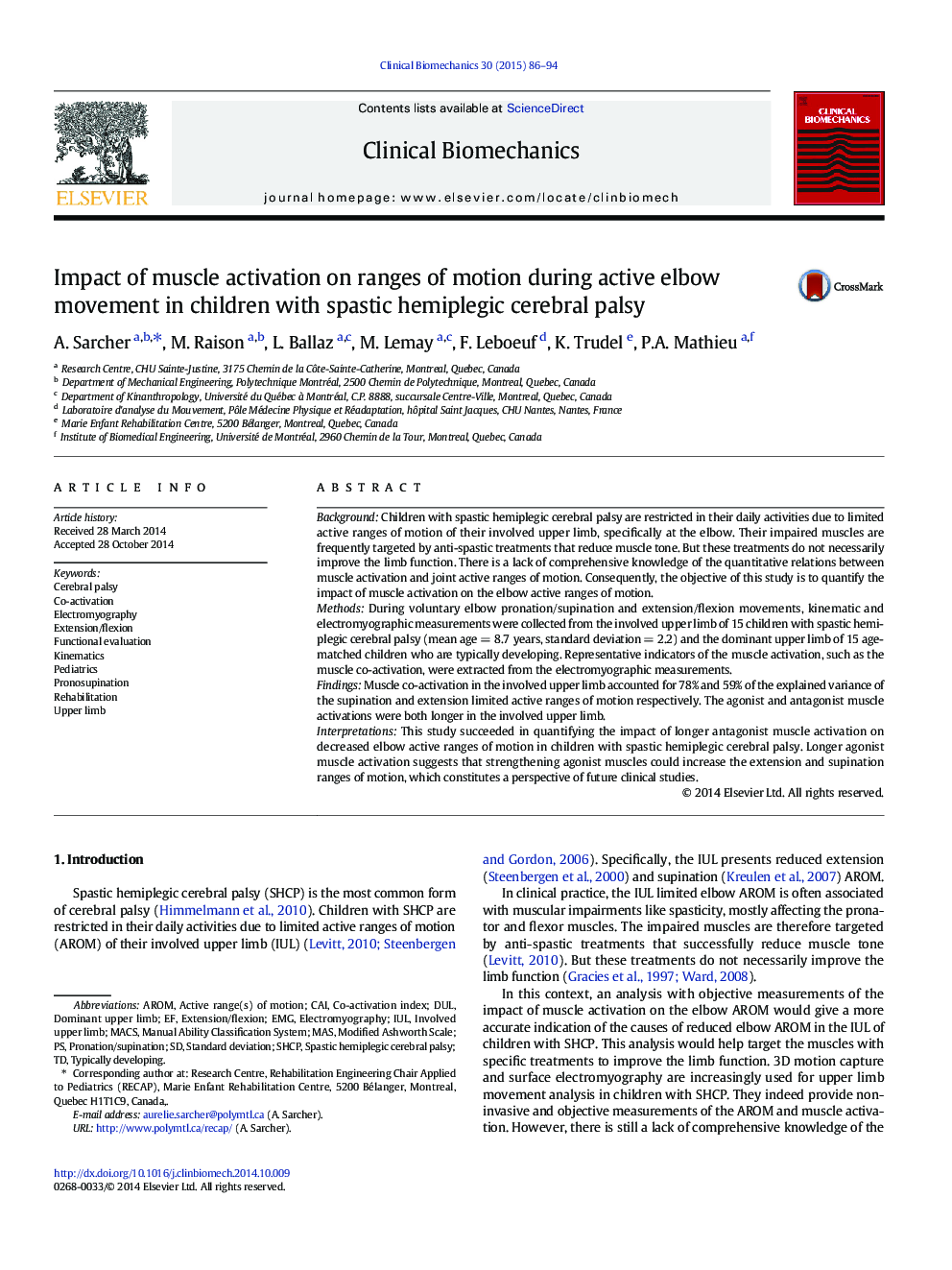| Article ID | Journal | Published Year | Pages | File Type |
|---|---|---|---|---|
| 4050266 | Clinical Biomechanics | 2015 | 9 Pages |
•Analysis of elbow movement in the involved arm of children with spastic hemiplegia•Data collection on upper limb muscle activations and ranges of motion•Higher co-activation implies weaker supination and decreased elbow extension.•Strengthening agonist muscles could increase the joint ranges of motion.
BackgroundChildren with spastic hemiplegic cerebral palsy are restricted in their daily activities due to limited active ranges of motion of their involved upper limb, specifically at the elbow. Their impaired muscles are frequently targeted by anti-spastic treatments that reduce muscle tone. But these treatments do not necessarily improve the limb function. There is a lack of comprehensive knowledge of the quantitative relations between muscle activation and joint active ranges of motion. Consequently, the objective of this study is to quantify the impact of muscle activation on the elbow active ranges of motion.MethodsDuring voluntary elbow pronation/supination and extension/flexion movements, kinematic and electromyographic measurements were collected from the involved upper limb of 15 children with spastic hemiplegic cerebral palsy (mean age = 8.7 years, standard deviation = 2.2) and the dominant upper limb of 15 age-matched children who are typically developing. Representative indicators of the muscle activation, such as the muscle co-activation, were extracted from the electromyographic measurements.FindingsMuscle co-activation in the involved upper limb accounted for 78% and 59% of the explained variance of the supination and extension limited active ranges of motion respectively. The agonist and antagonist muscle activations were both longer in the involved upper limb.InterpretationsThis study succeeded in quantifying the impact of longer antagonist muscle activation on decreased elbow active ranges of motion in children with spastic hemiplegic cerebral palsy. Longer agonist muscle activation suggests that strengthening agonist muscles could increase the extension and supination ranges of motion, which constitutes a perspective of future clinical studies.
